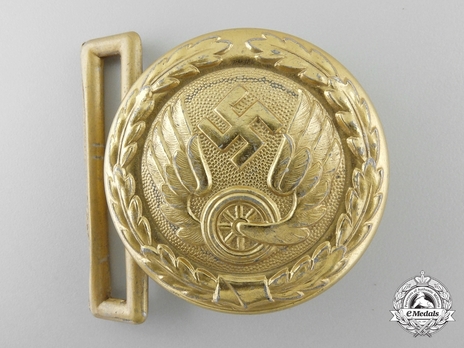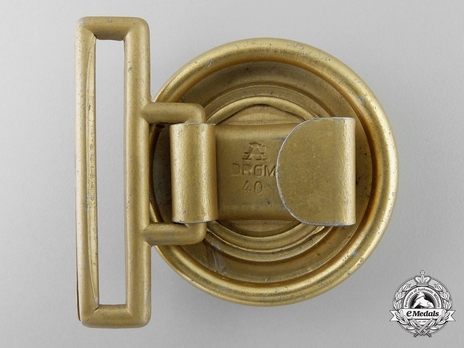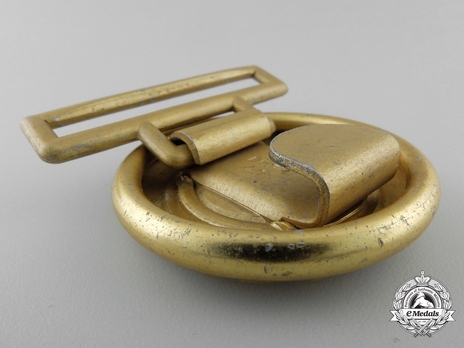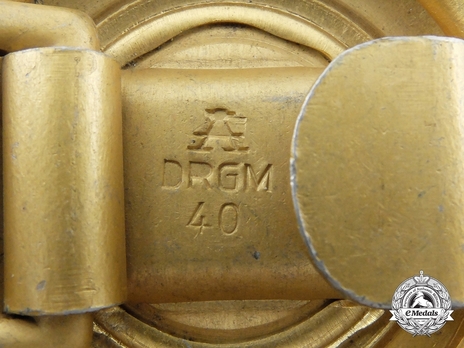German Railway 2nd Pattern Belt Buckle
CATEGORY: Version
SKU: 72.GOR.02.02.01.003.000
Estimated market value:




Estimated market value:
In fire gilt aluminum, maker marked with the stylized Assmann "A" (F.W. Assmann & Söhne, Lüdenscheid), marked "DRGM" (Deutsches Reichsgebrauchsmuster) and numbered "40" (1940) on the reverse, measuring 47 mm, near mint. This particular buckle is illustrated on page 477 of "Belt Buckles & Brocades of the Third Reich, Revised Edition" by John R. Angolia and came from his personal collection.
The Deutsche Reichsbahn (German National Railway) was created after the First World War in 1920 by combining the formerly independent state railways of the abolished German Empire into a national organisation. Under NSDAP rule, the German state railway system was reorganised in the 1930s to better meet the needs of the economy and to prepare for war, eventually supplying the front lines with soldiers and supplies. The Reichsbahn also had an infamous role to play in the Holocaust, transporting Jews and other “undesirables” to concentration and extermination camps.
The Bahnschutzpolizei (railway protection police) was founded in 1939 as a merger of the Bahnpolizei (railway police) and the Reichsbahnschutz (railway protection force), the latter being regular railway employees that, beyond their normal functions, additionally served as railway security personnel.
The Bahnschutzpolizei as a railway sub-organisation was made up of policemen that were employed by the Reichsbahn rather than the German police force. Their task was to ensure railway safety as well as preventing railway-related espionage and sabotage. During the war, most members of the Bahnschutzpolizei served in the occupied Eastern European territories.
The 2nd pattern belt buckle was introduced in September of 1939 and worn until the end of the war. It is round with a 47mm diameter and gold-washed. It was worn by railway officials of pay grades 6 to 17, which included some Enlisted Ranks as well as most Officer ranks, with the exception of the Higher Leaders.
The buckle features a spoked wheel viewed from the side with a wing on each side extending upwards and a mobile swastika above the wheel and in between the wings. All is surrounded by an almost full oak leaf wreath. The centre part is pebbled while the outside around the oak leaves is smooth.
The reverse is usually stamped with a manufacturer’s code and the last two digits of the year of manufacture. Initially, it was worn on a black leather belt, but later also with a brocade dress belt in gold with two 5mm dark blue stripes. The brocade belt was only allowed for wear by members of the highest pay grades, 1 to 5. The brocade belt was discontinued in 1941.

Comments
Sign in to comment and reply.


Scroll Top